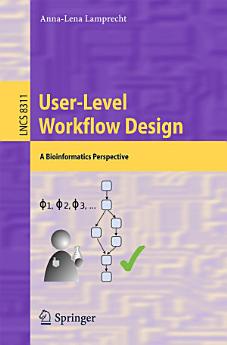User-Level Workflow Design: A Bioinformatics Perspective
Anna-Lena Lamprecht
Dec 2013 · Springer
Ebook
223
Pages
reportRatings and reviews aren’t verified Learn More
About this ebook
The continuous trend in computer science to lift programming to higher abstraction levels increases scalability and opens programming to a wider public. In particular, service-oriented programming and the support of semantics-based frameworks make application development accessible to users with almost no programming expertise. This monograph establishes requirement-centric scientific workflow design as an instance of consequent constraint-driven development. Requirements formulated in terms of user-level constraints are automatically transformed into running applications using temporal logic-based synthesis technology. The impact of this approach is illustrated by applying it to four very different bioinformatics scenarios: phylogenetic analysis, the dedicated GeneFisher-P scenario, the FiatFlux-P scenario, and microarray data analyses.
Rate this ebook
Tell us what you think.
Reading information
Smartphones and tablets
Install the Google Play Books app for Android and iPad/iPhone. It syncs automatically with your account and allows you to read online or offline wherever you are.
Laptops and computers
You can listen to audiobooks purchased on Google Play using your computer's web browser.
eReaders and other devices
To read on e-ink devices like Kobo eReaders, you'll need to download a file and transfer it to your device. Follow the detailed Help Center instructions to transfer the files to supported eReaders.





